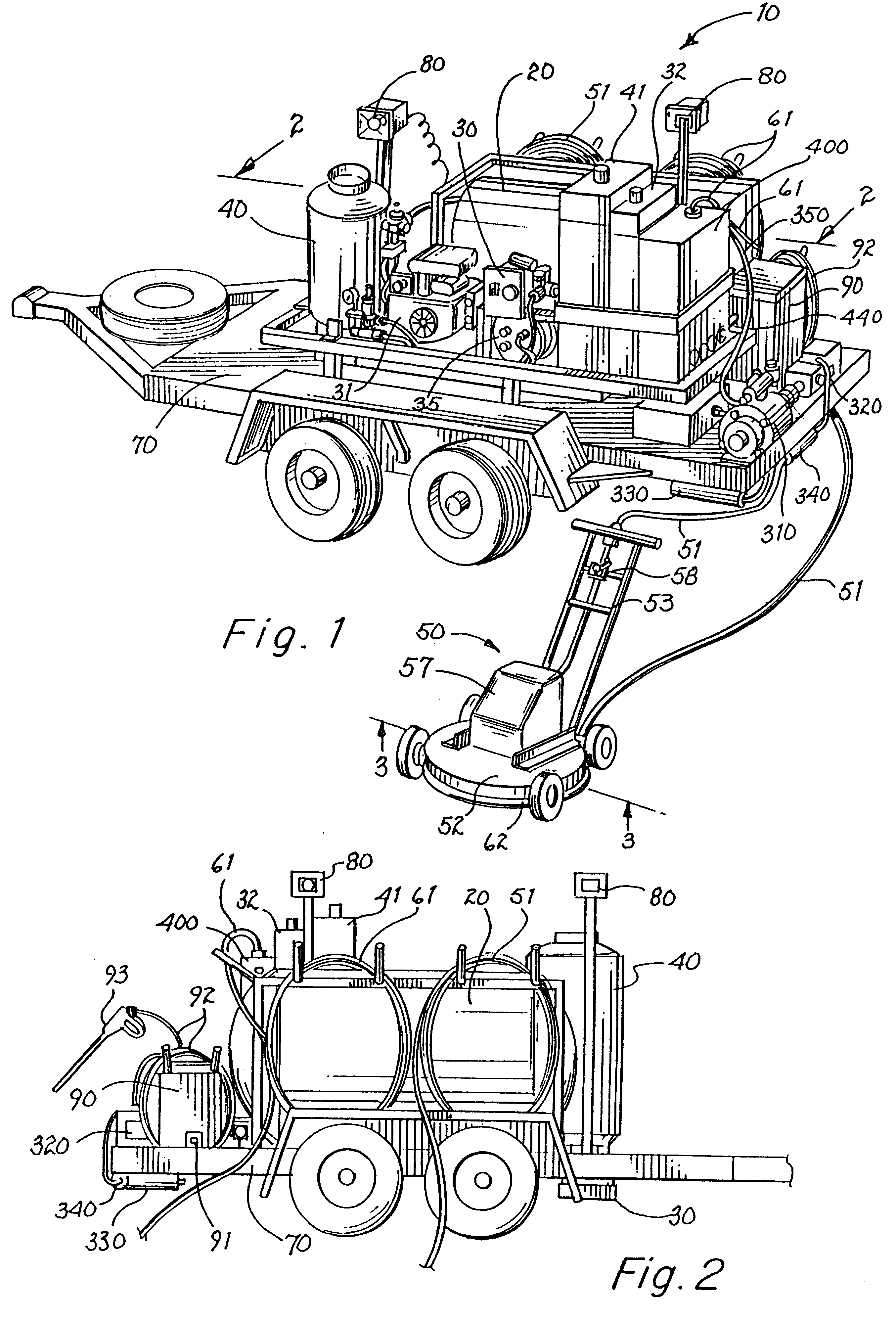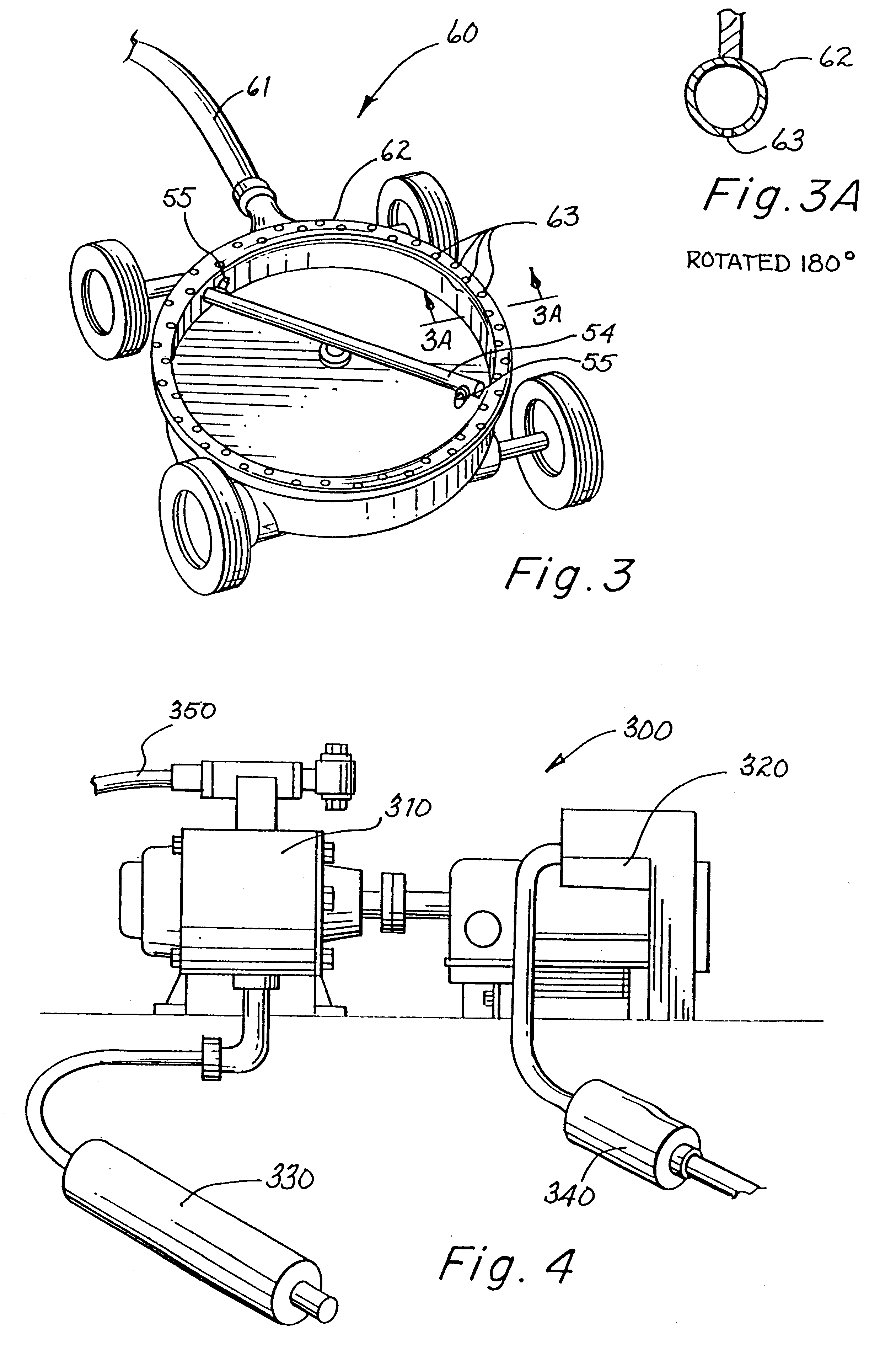Mobile cyclonic power wash system with water reclamation and rotary union
a technology of cyclonic power washing and rotary union, which is applied in the direction of cleaning with liquids, carpet cleaners, cleaning filter means, etc., can solve the problems of not being designed to be independent, the system is not designed to operate independently, and the operation of the prior art system is limited
- Summary
- Abstract
- Description
- Claims
- Application Information
AI Technical Summary
Benefits of technology
Problems solved by technology
Method used
Image
Examples
Embodiment Construction
FIGS. 1 and 2 respectively show front and rear views of a mobile cyclonic power wash system 10 which includes the novel water reclamation and filter recycling system 60 (shown generally in FIG. 3 but also including elements shown in FIGS. 3A, 4 and 5) for reclaiming and filtering water that is sprayed by the system and recycling the filtered water into a storage means 20 so that the water is re-used for cleaning. FIGS. 7, 7A and 8 respectively show elevation views of a first subassembly of components 110 and second subassembly of components 150 for an improved rotary union 100 (shown generally in FIGS. 7 and 8) used in the cyclonic power sprayer 50 in the power wash system 10. These features of the power wash system 10 are now described in more detail.
The Power Wash System
As seen in FIGS. 1 and 2, the mobile cyclonic power wash system 10 includes a water storage means 20 for holding the water to be used for cleaning by the system 10, a water pumping system 30 for pumping and pressur...
PUM
| Property | Measurement | Unit |
|---|---|---|
| Pressure | aaaaa | aaaaa |
| Angular velocity | aaaaa | aaaaa |
| Temperature | aaaaa | aaaaa |
Abstract
Description
Claims
Application Information
 Login to View More
Login to View More - R&D
- Intellectual Property
- Life Sciences
- Materials
- Tech Scout
- Unparalleled Data Quality
- Higher Quality Content
- 60% Fewer Hallucinations
Browse by: Latest US Patents, China's latest patents, Technical Efficacy Thesaurus, Application Domain, Technology Topic, Popular Technical Reports.
© 2025 PatSnap. All rights reserved.Legal|Privacy policy|Modern Slavery Act Transparency Statement|Sitemap|About US| Contact US: help@patsnap.com



